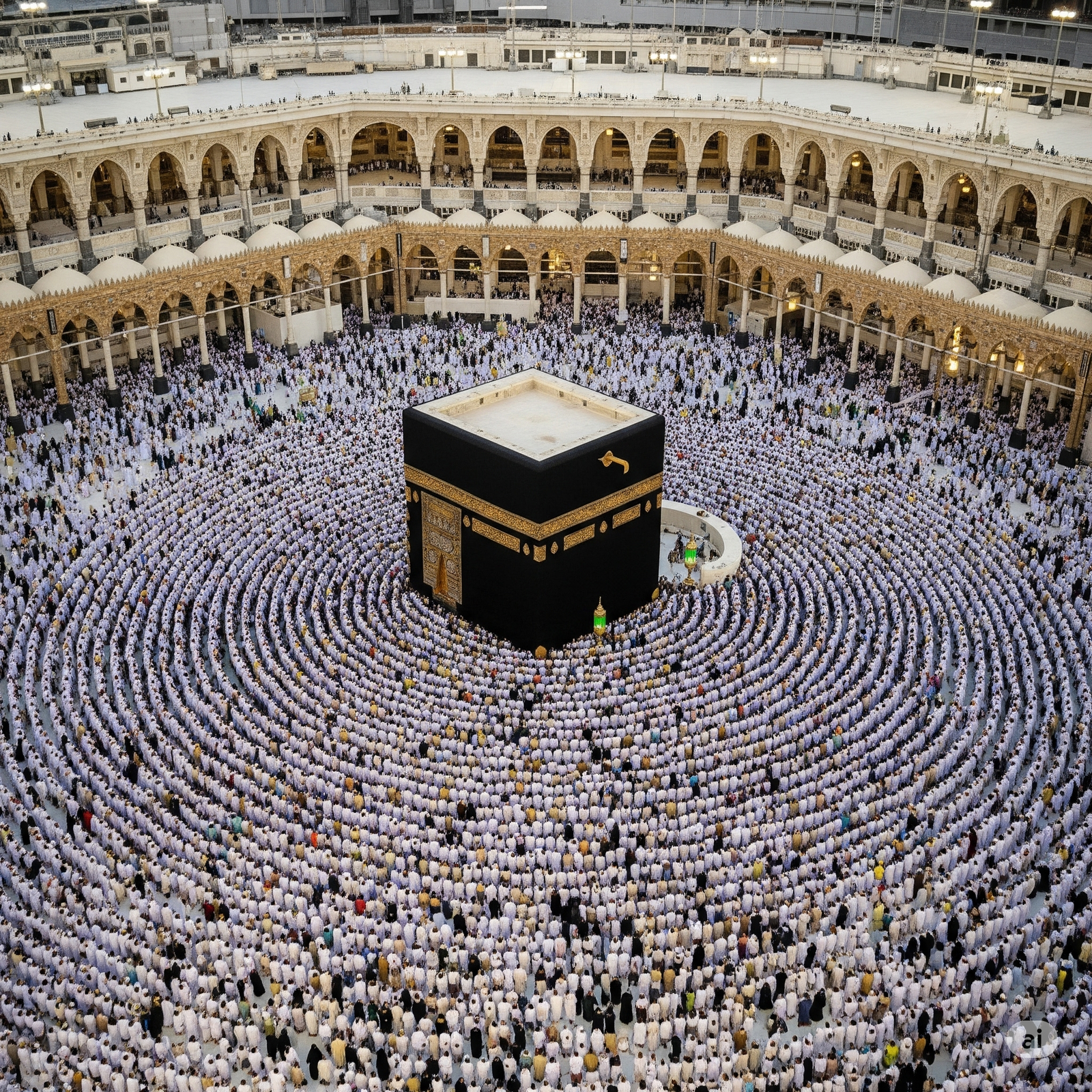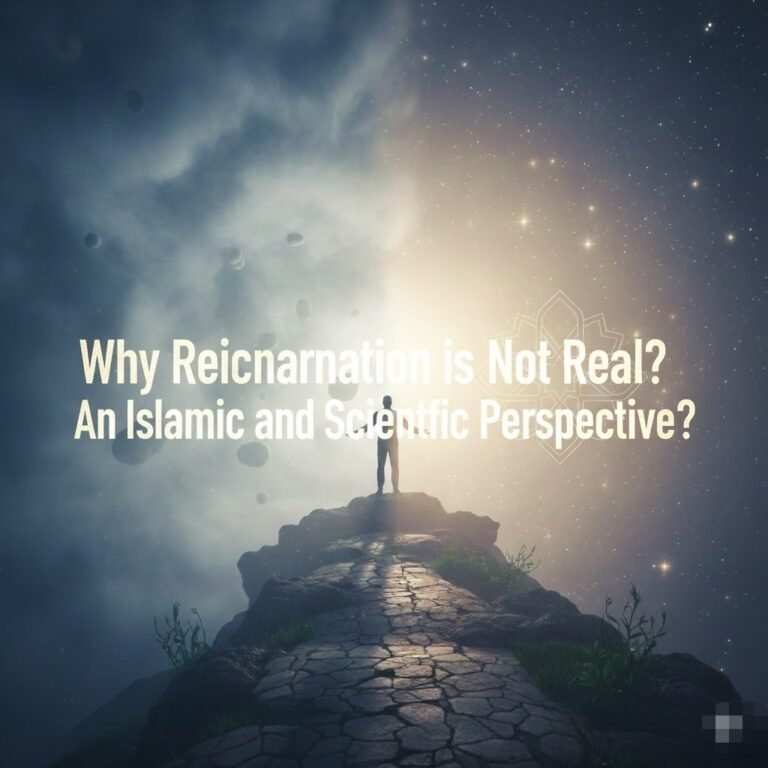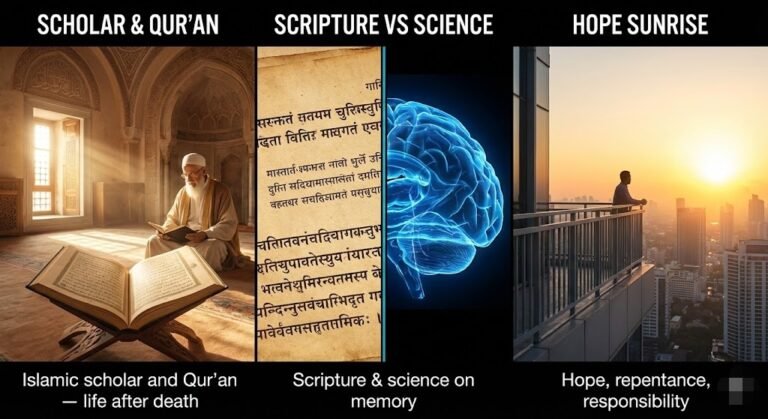Misunderstanding the Qiblah: Do Muslims Really Worship the Kaaba?
In a world brimming with diverse beliefs and practices, it’s natural for questions to arise about the customs of different faiths. One such question, often posed with genuine curiosity, is whether Muslims worship the Kaaba, that iconic cube-shaped structure in Makkah. This article, the result of an intense and honest comparative religious study, aims to bring forth the pure, solid truth for God’s sake, guiding you positively towards a clearer understanding of Islam.
Let’s address this directly: Muslims do not worship the Kaaba. Our devotion, our prayers, and our very beings are directed solely to Allah, the Only One True God. The Kaaba serves a profoundly different, yet equally essential, purpose in our spiritual lives.
The Kaaba: Our Direction, Not Our Deity
The Kaaba is known as the Qibla — which simply means the direction Muslims face during their daily prayers (Salah). This isn’t an act of prostration to the structure itself, but rather an act of unifying direction and unity.
” {قَدۡ نَرَىٰ تَقَلُّبَ وَجۡهِكَ فِي ٱلسَّمَآءِۖ فَلَنُوَلِّيَنَّكَ قِبۡلَةٗ تَرۡضَىٰهَاۚ فَوَلِّ وَجۡهَكَ شَطۡرَ ٱلۡمَسۡجِدِ ٱلۡحَرَامِۚ وَحَيۡثُ مَا كُنتُمۡ فَوَلُّواْ وُجُوهَكُمۡ شَطۡرَهُۥۗ وَإِنَّ ٱلَّذِينَ أُوتُواْ ٱلۡكِتَٰبَ لَيَعۡلَمُونَ أَنَّهُ ٱلۡحَقُّ مِن رَّبِّهِمۡۗ وَمَا ٱللَّهُ بِغَٰفِلٍ عَمَّا يَعۡمَلُونَ}
We have certainly seen the turning of your face, [O Muḥammad], toward the heaven, and We will surely turn you to a qiblah with which you will be pleased. So turn your face [i.e., yourself] toward al-Masjid al-Ḥarām. And wherever you [believers] are, turn your faces [i.e., yourselves] toward it [in prayer]. Indeed, those who have been given the Scripture [i.e., the Jews and the Christians] well know that it is the truth from their Lord. And Allāh is not unaware of what they do. ”
Imagine millions of people around the globe, all praying at the same moment. If each person faced a different direction — some north, some south — how would that reflect the unity of a single global community devoted to One God? The Qibla solves this. It’s a powerful symbol of unity and submission to Allah, aligning our hearts and bodies in a singular direction, irrespective of our geographical location. Whether you are in New York or New Zealand, if you are a Muslim praying, you turn towards the Kaaba.
Interestingly, early Muslim cartographers were the first to accurately map the world, placing the Kaaba at its very center. Even with modern mapping conventions, this sacred structure remains a central point on the global stage, a testament to its enduring significance.
Tawaf: Circling the Oneness of God
When Muslims travel to the Sacred Mosque in Makkah, they perform Tawaf, a beautiful ritual of circumambulation around the Kaaba. This act is not worship of the Kaaba, but rather a profound symbol of monotheism. Just as every circle has one single center, so too do Muslims affirm that there is only One Allah, worthy of all worship and devotion. It’s a physical embodiment of our unwavering focus on the Divine Center of all existence.
The Black Stone: A Lesson from Umar ibn al-Khattab
To further clarify this point, consider the powerful statement of Umar ibn al-Khattab (RA), a revered companion of the Prophet Muhammad (peace be upon him), regarding the Black Stone (Hajr-e-Aswad), which is embedded in the Kaaba:
“I know that you are a stone and can neither benefit nor harm. Had I not seen the Prophet touching (and kissing) you, I would never have touched (and kissed) you.”
This statement eloquently expresses that even the most venerated objects within Islam are not worshipped. Our actions, like touching the Black Stone, are acts of emulation of the Prophet, not adoration of the object itself.
Furthermore, at the time of the Prophet, people would even stand on the Kaaba to give the Adhan, the call to prayer. One might ask: Which idol worshipper stands upon the idol they worship? This historical fact powerfully demonstrates that the Kaaba has never been an object of worship.
Echoes of the Sacred: The Kaaba’s Biblical Connections
While Islam is a distinct religion, its roots are deeply intertwined with the Abrahamic tradition. A comparative study reveals fascinating parallels and continuity, particularly when examining the Kaaba and its history through the lens of biblical texts. This isn’t to say the Bible explicitly describes the Kaaba as Muslims know it today, but rather that it hints at concepts and places that resonate deeply with Islamic narratives.
Congregational Prayer: A Shared Heritage
The concept of communal prayer, a cornerstone of Muslim worship, is also beautifully echoed in various biblical passages:
-
“These I will bring to my holy mountain and give them joy in my house of prayer. Their burnt offerings and sacrifices will be accepted on my altar; for my house will be called a house of prayer for all nations.”
— Isaiah 56:7 -
“I will come into your house and worship in group (congregationally, which only Muslims do this).”
— Psalm 5:7 -
“It is written my house shall be house of prayer (Jesus is referring to Isaiah 56:7).”
— Matthew 21:12-13
These verses suggest a universal concept of a house dedicated to congregational prayer for all peoples, a vision that finds its fulfillment in the congregational prayers offered by Muslims worldwide, turning towards the Kaaba.
The Black Stone and “Houses of God” in Scripture
The idea of a sacred stone, marked as a “House of God,” appears in ancient biblical narratives:
In Genesis 28:10-22, Jacob sets a stone and calls it “HOUSE OF GOD.” Later, in Genesis 35:1-3, God reminds Jacob about this very stone he set to be God’s house.
Could this be an ancient precedent for the reverence shown to such objects not as deities, but as markers of divine presence or covenant? Jesus himself, in Matthew 21:42-43, refers to a “stone that the builders rejected,” which “has become the cornerstone.”.
Baca: Makkah’s Ancient Echo in the Psalms
Perhaps one of the most astonishing connections is found in Psalm 84. The Holy Kaaba, built by Prophet Abraham and his son Ishmael, is located in Makkah. While the Qur’an mentions Makkah (48:24) and also refers to it as Bakkah (3:96): “Verily, the first House [of worship] appointed for mankind was that in Bakkah [Makkah], full of blessing, and guidance for all people,” the name “Baca” appears in the Psalms:
Psalm 84
- Blessed are those who dwell in your house; they are ever praising you.
- Blessed are those whose strength is in you, whose hearts are set on pilgrimage.
- As they pass through the Valley of Baka, they make it a place of springs; the autumn rains also cover it with pools.
- They go from strength to strength, till each appears before God in Zion.
- Hear my prayer, Lord God Almighty; listen to me, God of Jacob.
- Look on our shield, O God; look with favor on your anointed one.
- Better is one day in your courts than a thousand elsewhere; I would rather be a doorkeeper in the house of my God than dwell in the tents of the wicked.
Consider verse 6: “As they pass through the Valley of Baka, they make it a place of springs; the autumn rains also cover it with pools.” This description remarkably aligns with the Valley of Makkah and the well-known well of Zamzam, which has been a miraculous source of water near the Kaaba for thousands of years. Who were these people whose hearts were “set on pilgrimage,” journeying through the “Valley of Baka” to a “house of God” where they would praise Him? For Muslims, this powerfully resonates with the pilgrimage to Makkah and the significance of the Kaaba, the first House of God on Earth.
Hagar, Ishmael, and the Well of Zamzam in the Bible
The story of Prophet Abraham’s wife, Hagar, and their son Ishmael, and their journey into the wilderness, also finds echoes in the Bible, indirectly referencing the sacred well of Zamzam. In Genesis 16:7, after Hagar’s departure, it states:
“And the angel of the Lord found her by a fountain [spring] of water in the wilderness, by the fountain [spring] in the way to the Hijaz (Shur).”
It continues, “And she called the name of the Lord that spake unto her, Thou God seest me: for she said, Have I also here looked after him that seeth me?” “Wherefore the well was called Be’er lahai roi (Well of the Living One Who sees me); behold, it is between Kadesh and Bered.”
The mention of “Hijaz” — the region where Makkah is located — and a miraculous “fountain of water” in the wilderness aligns remarkably with the Islamic narrative of Hagar and Ishmael, and the subsequent miraculous gushing forth of the Well of Zamzam. This divine provision underscores the sacred nature of this blessed land.
The Pure Truth: A Journey of Understanding
Through this journey of religious comparison and study, we hope the pure truth has become clear: Muslims do not worship the Kaaba. It is not an idol, but a spiritual compass, a focal point for unity, and a testament to the singular worship of Allah. The profound wisdom behind facing the Kaaba is to unify a global community, directing all hearts and minds to the One Creator.
We invite you to reflect on these insights, to continue your own journey of understanding, and to approach all faiths with an open heart and a mind eager for truth. May this exploration bring you closer to understanding the beauty and simplicity of Islam’s core message: there is no god but Allah, and Muhammad is His final messenger.




